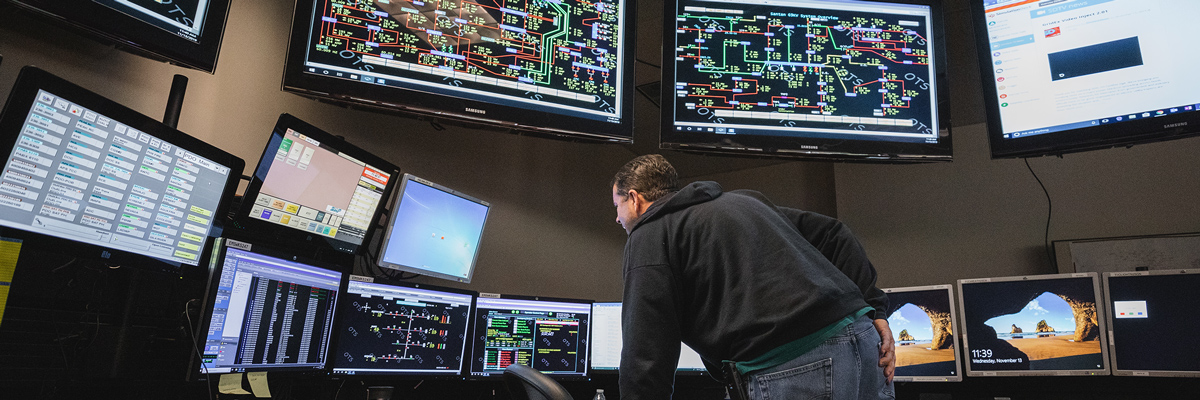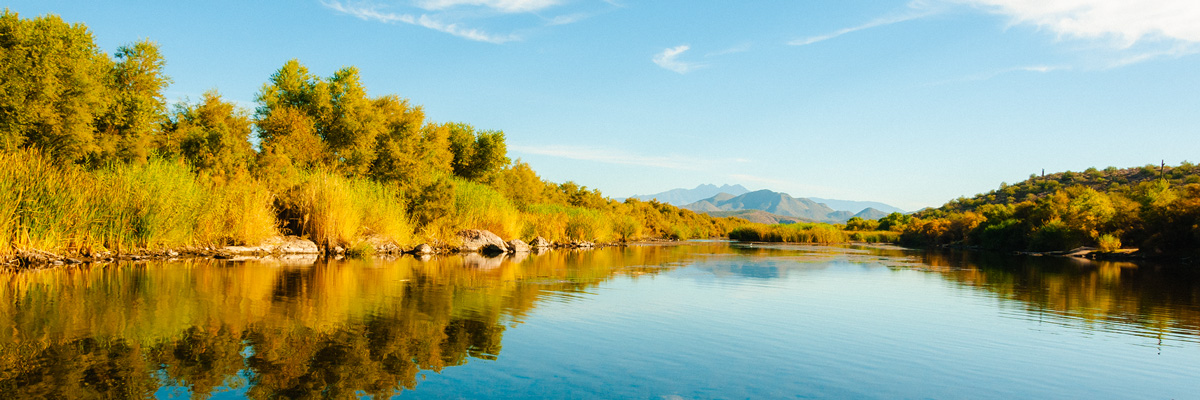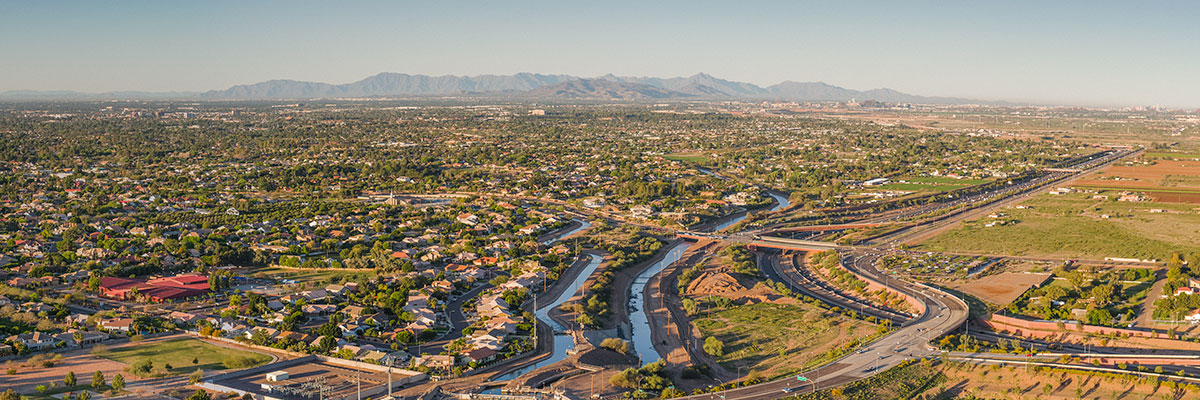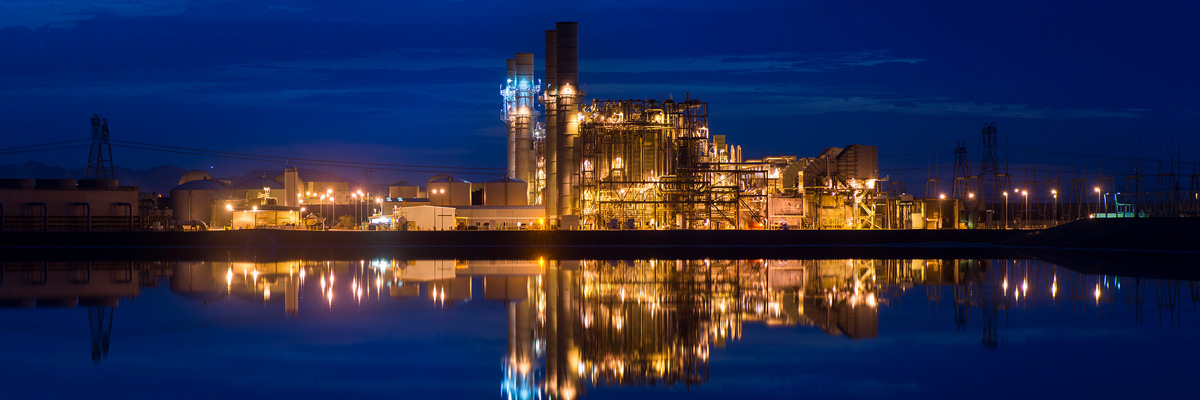
SRP power generation sources
Explore the energy mix we’re building to power tomorrow.
On this page:
SRP generates electricity from a mix of renewable sources like solar, geothermal, biomass, wind and hydropower. To ensure our ability to meet high demand for power at all times, including during Arizona’s hot summers, we also rely on traditional generation sources, such as coal and natural gas. These sources are the reliability backbone of the power grid.
We also buy and sell excess energy on energy markets as needed.
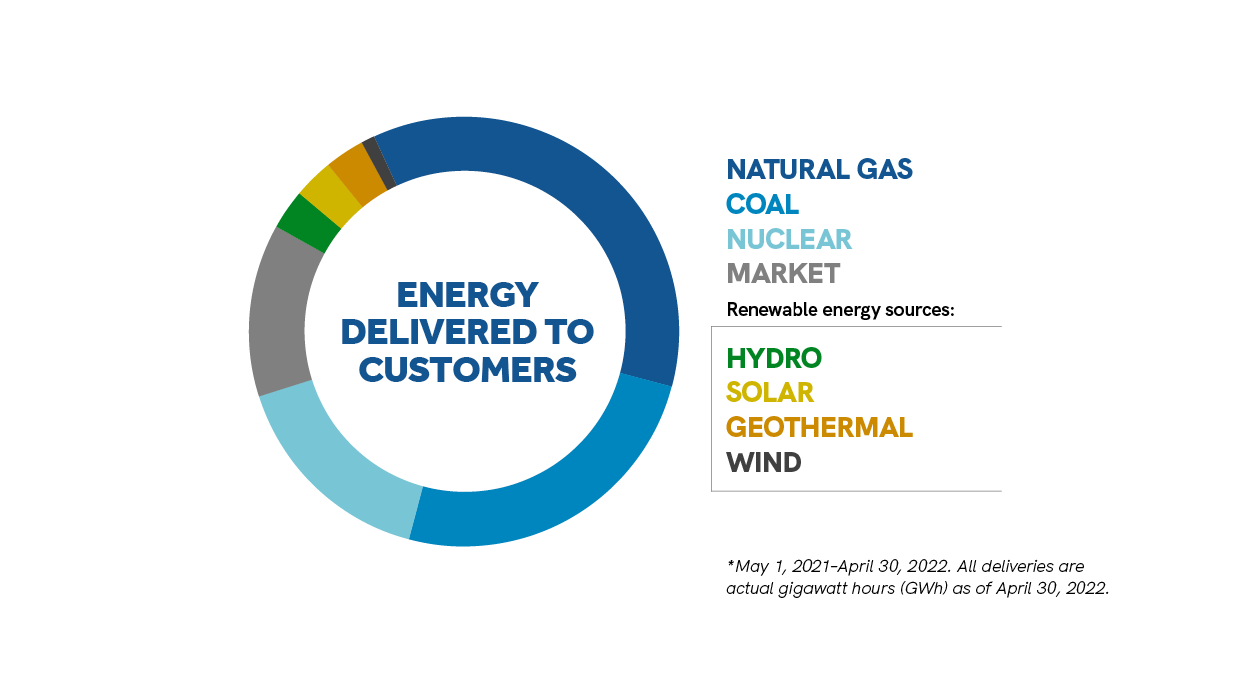
Cleaner energy sources for the future
Each year, SRP steadily adds more clean and renewable energy sources that improve air quality and help preserve the natural beauty of Arizona.
While more and more of our energy mix will be renewable moving forward, we’ll still have natural gas and nuclear power sources so that we can provide dependable and affordable power.
This robust energy mix helps strengthen and protect our power grid during the hot summer months, when the Valley’s energy needs are at their highest.
Explore generating stations and power sources
SRP operates and participates in a number of major power plants and generating facilities in Arizona and the Southwest. These generating stations use fuel, steam and nuclear reaction to create energy.
Learn about each generating station below.
Arizona Falls - hydropower
Arizona Falls is formed by a natural 20-foot drop along the Arizona Canal. The plant generates up to 750 kilowatts of carbon-free electricity, which can power up to 150 homes.
The roof of the turbine building and adjacent shade structure house solar panels to power ceiling fans on the public deck. The electricity generated by the plant and solar panels is also fed into SRP's grid.
Arizona Falls is located at G.R. Herberger Park, 56th Street and Indian School Road, and is open 24 hours. The main attractions are three waterfalls, a shaded viewing room and a pedestrian bridge.
Crosscut Hydroelectric Plant - hydropower
Located on the Salt River Project Main Campus, the Crosscut hydroelectric power plant is on “water order” only – water only runs through the plant when water users order their water shares, and the plant only runs if the water shares released are large enough to operate the unit.
Horse Mesa Dam - hydropower
Horse Mesa Dam, named for nearby Horse Mesa, was constructed between 1924 and 1927. Behind the 305 foot tall and 660 feet long dam is Apache Lake.
Horse Mesa Dam is home to three hydraulic turbine-generator units rated at a total of 32 megawatts (MW) plus one reversible pump-turbine (pumped storage) unit rated at 119 MW. The pumped storage unit was installed in 1972 and is capable of either generating electricity or using grid power to pump water onto the upper reservoir, to store energy for later use.
Mormon Flat Dam - hydropower
Mormon Flat Dam is named after nearby Mormon Flat, a place where pioneers from Utah stopped to camp on their way to the Valley. The dam, built between 1923 and 1925, stands 224 feet high and 380 feet long.
The dam has one hydraulic turbine-generator rated at 11.5 MW plus one reversible pump-turbine (pumped storage) unit rated at 55 MW. The pumped storage unit was installed in 1971 and is capable of either generating electricity or using grid power to pump water onto the upper reservoir, to store energy for later use.
Roosevelt Dam - hydropower
The Theodore Roosevelt Dam, named after the 26th President of the United States, was among the first projects authorized under the Reclamation Act of 1902, after farmers in the Salt River Valley placed their land on collateral for funding. As completed in 1911, the dam was a dry masonry structure made from large, irregular blocks, which in total stood 280 feet tall. Behind the dam is Roosevelt Lake, the largest reservoir along the Salt River.
As envisioned, Roosevelt Dam provided several benefits including water storage, flood control, hydropower, and recreation, all of which contribute to economic growth in Central Arizona.
In 1989, the Bureau of Reclamation began a project to increase water storage capacity and overall safety of the dam. In addition to raising the original structure and encasing it with concrete, new spillways were installed, power generation was updated, a new bridge was built allowing State Route 188 to be realigned off the dam, and new recreational facilities were created.
Completed in 1996, the modern-day dam stands at 357 feet with a length of 1,200 feet, has a reservoir capable of holding approximately 1.6 million acre-feet, and can produce up to 34 MW of hydropower from a single hydraulic turbine-generator.
South Consolidated Hydroelectric Unit - hydropower
Constructed in 1981, this plant is located on a 35-foot drop in the South Canal in Northeast Mesa, just below the head of the Eastern Canal. Its generating capacity is 1.4 MW.
Stewart Mountain Dam - hydropower
Stewart Mountain Dam is named after Stewart Ranch, which used to be located nearby. The dam was built between 1928 and 1930 and stands 212 feet high and 583 feet long. A single hydraulic turbine-generator with a maximum capacity of 13 MW operates based on water order.
Agua Fria Generating Station - natural gas, solar and battery storage
Wholly owned by SRP and located in Glendale, Arizona, the Agua Fria Generating Station is a multifaceted energy center that hosts different types of power generation resources, including natural gas steam units, fast-ramping flexible turbines, battery storage and a small solar array. Resources at this site are essential for SRP to deliver reliable electricity on the hottest summer days, helping ensure the safety of families in the Valley.
The site has eight natural gas units, including three conventional steam generation units and five combustion turbine generators, with a total capacity of 722 MW. This is enough to power more than 160,000 average-sized homes. The station’s natural gas units are mainly used to supplement SRP’s other power generation resources. The units also help smooth out fluctuations in power that can come from renewable resources such as solar and wind energy, thereby supporting SRP in reliably adding more renewables to the power system.
In fall 2022, two 49.5 MW flexible natural gas units were added to Agua Fria to support SRP in delivering reliable power during the summer. These units have the ability to ramp up and down quickly, responding to peak power demands within 10 minutes, and can rapidly adjust power output to match changing demand. Along with other natural gas units at the station, these resources are critical for delivering reliable power and run only a few hundred hours per year, primarily in the summer. This reduces the amount of time the turbines are running, resulting in minimal environmental impact.
Adjacent to Agua Fria is the Bolster Substation Battery System, a 25 MW battery storage facility connected directly to SRP’s energy grid. It can be discharged during peak energy periods to help meet high customer demand. It is SRP’s largest stand-alone battery storage system in operation. The Agua Fria site also has a 200-kilowatt solar generating field which SRP owns and operates.
Agua Fria’s construction began in the late 1950s. Unit 2 was completed in April 1957, Unit 1 in January 1958 and Unit 3 in April 1961. Units 5 and 6 were completed in July 1974 and Unit 4 in May 1975. The solar generating field was completed in March 2001, and the Bolster Substation Battery System was placed into service in September 2021. Units 7 and 8 (two flexible natural gas units) were added in fall of 2022.
Coolidge Generating Station - natural gas
As the name suggests, Coolidge Generating Station is located in Coolidge, Arizona. It has a capacity of 575 MW from 12 aero-derivative turbine units.
SRP uses the energy output from Coolidge to balance electrical load during peak power usage. Construction began in August 2009 and was completed in May 2011.
Fun facts about the station:
- Coolidge is designed to respond in just 10 minutes with enough electricity to meet peak power demands.
- The station can provide enough electricity to power approximately 130,000 homes in the Valley.
Gila River Power Station - natural gas
Located in Gila Bend, Arizona, the Gila River Power Station is home to four combined cycle power blocks – SRP owns and operates blocks 1 and 4, and operates blocks 2 and 3 for the owner Tucson Electric Power (TEP).
Each power block consists of two combustion turbines, two heat recovery steam generators and one steam turbine. They have a total capacity of 1,100 MW, while all four blocks combined have a total capacity of 2,200 MW.
Construction began in 2001, and the plant went online in 2003.
Desert Basin Generating Station - natural gas, combustion and steam
Wholly owned by SRP, the Desert Basin Generating Station, located in Casa Grande, Arizona, was originally constructed between 1999 and 2001, with SRP purchasing the plant in 2003. This site consists of a combined-cycle, natural gas-fired generating unit with two combustion turbines, two heat recovery steam generators and one steam turbine for a combined capacity of 635 MW. This combined-cycle plant was built with fuel efficiency in mind, and its strength is efficiently providing power that our customers need throughout the year.
In 2022, two 49.5 MW flexible natural gas units were added at Desert Basin, and the generation from these new resources, in addition to the site’s existing resources, is essential for SRP to deliver reliable electricity during the grid’s most stressed times, like on the hottest summer days, helping ensure the safety of families in the Valley.
The two new flexible natural gas units at Desert Basin can ramp up and down quickly, responding to peak power demands within 10 minutes, and can rapidly adjust power output to match changing demand. Flexible natural gas units help smooth out fluctuations in power that can come from renewable resources such as solar and wind energy, thereby supporting SRP in reliably adding more renewables to the power system. Because these units are focused on supporting reliability, they run only a few hundred hours per year, resulting in minimal environmental impact.
The total generation capacity of the Desert Basin facility is 744 MW. With its proximity to metropolitan Phoenix, Desert Basin provides valuable complementary generation to SRP’s significant portfolio of renewable resources which can have variable output. Mindful of Arizona's precious water resources, the plant is designed and equipped to use renewable water supplies, including reclaimed wastewater.
Kyrene Generating Station - natural gas
Located in Tempe, Arizona, and owned and operated by SRP, Kyrene Generating Station has one combined-cycle, two steam and three combustion turbine generators. The station has a maximum gross capacity of approximately 580 MW.
Kyrene's original steam turbines were SRP’s first major natural gas power plants, providing reliable power over the decades as our community grew. Kyrene also has three “quick-start” turbines that have the capability of burning fuel oil in the event of a natural gas supply shortage. Kyrene’s newest unit is a natural gas-fired combined-cycle unit.
Construction on Kyrene began in 1951 with the steam turbines. Unit 1 was completed in 1952, and Unit 2 was completed in 1954. The combustion turbines, which include units 4, 5 and 6, were built in the early 1970s. The combined-cycle unit, Unit 7, was completed in 2002.
Mesquite Generating Station- natural gas
Located in Arlington, Arizona, Mesquite is composed of two natural gas-fired combined-cycle blocks. SRP owns Block 1 and Onward Energy owns Block 2.
Each block has an approximate generation capability of 625 MW for a total generation capability of 1,250 MW, depending on season variability.
Plant construction began in 2001 and the plant began generating power in 2003.
Santan Generating Station - natural gas
Located in Gilbert, Arizona, the Santan Generating Station is a mix of power generating units that are fueled by natural gas. It is owned and operated by SRP. Santan is able to responsively serve SRP’s expected needs throughout the year.
The original plant is made up of four combined-cycle, combustion and steam generation units, all completed between 1974 and 1975. An additional unit made up of two combustion turbines and one steam turbine began operation in 2005. Another generating unit made up of one combustion turbine and one steam turbine reached commercial operation in March 2006. Together, these units provide a maximum gross capacity of approximately 1,415 MW.
Dry Lake Wind Power Project - wind
The Dry Lake Wind Power Project, located near Heber, Arizona, is the state's first commercial-scale wind farm. The project is situated on a combination of private, state and Bureau of Land Management public lands.
The Suzlon S88-2.1 MW turbines at this wind power project generate 127 MW of clean, renewable energy. Typically, a 127 MW wind project can generate power for more than 20,000 average homes, according to the American Wind Energy Association's calculation.
The project is operated by Iberdrola Renewables and SRP has an agreement to purchase 100% of the plant's electrical energy output.
Coronado Generating Station - coal
SRP owns and operates this coal-fired generating station located near St. Johns, in eastern Arizona.
It has a capacity of 762 MW, from one 382 MW-unit and one 380 MW-unit, and uses the Powder River Basin as a fuel source.
Plant construction began 1975, with Unit 1 completed Dec. 31, 1979 and Unit 2 completed Oct. 1, 1980.
The plant is home to innovative environmental control equipment, including electrostatic precipitators to control fly ash, scrubbers to remove sulfur dioxide (SO2) and a water reservoir that’s lined to help recover and contain process waste. Unit 2 also has a Selective Catalytic Reduction (SCR) system to remove NOx and plans to have an SCR installed on Unit 1 by the end of 2025.
Craig Generating Station - coal
SRP owns a share of this station (29% of Unit 1 and Unit 2) located near Craig, Colorado. It has a capacity of 1,283 MW from three units. Each unit is rated at about 428 MW; SRP receives 124 MW each from Unit 1 and Unit 2. Tri-State is the operating agent for the Craig Generating Station.
Construction on Units 1 and 2 began in September 1974. Unit 2 was completed in November 1979; Unit 1 was completed in 1981, and Unit 3 was completed in 1984.
Ownership Summary of Craig Generating Station
| Unit 1&2 | Unit 3 |
| Salt River Project – 29% | Tri-State – 100% |
| Tri-State – 24% | |
| PacifiCorp – 19.28% | |
| Platte River Power Authority – 18% | |
| Xcel Energy – 9.72% |
Four Corners Power Plant - coal
Located 15 miles west of Farmington, New Mexico are five coal-fueled generating units belonging to the Four Corner Power Plant.
The plant has a capacity of 1,500 MW and 750-MW from both Units 4 and 5. SRP receives a 10% share, 74-MW from Units 4 and 5, respectively.
Plant construction began in 1961. Units 1 and 2 were completed in 1963; Unit 3 was completed in 1964, Unit 4 was completed in 1969, and Unit 5 was completed in 1970.
Ownership summary:
Units 1, 2 and 3 have been decommissioned, while Units 4 and 5 are shared by multiple power providers:
| Arizona Public Service | 63% |
| Public Service Company of New Mexico | 13% |
| Salt River Project | 10% |
| Tucson Electric Power | 7% |
| Navajo Transitional Energy Company | 7% |
Hayden Generating Station
Four miles east of Hayden, Colorado, are two coal-fired generating units belonging to Hayden Generating Station. SRP gets power from a share of the station – 50% of Unit 2. Xcel Energy is the operating agent for the Hayden Generating Station.
The total capacity of both units is 446 MW; Unit 1 produces 184 MW and Unit 2 produces 262 MW. (SRP receives 131 MW.) Unit 1 construction began in 1962 and was completed in 1965. Unit 2 construction began in 1973 and was completed in 1976.
Ownership Summary of Hayden Generating Station
| Unit 1 | Unit 2 |
| Public Service of Colorado 75.5% | Salt River Project 50.0% |
| PacifiCorp 24.5% | Public Service of Colorado 37.4% |
| PacifiCorp 12.6% |
Springerville Generating Station - coal
Springerville Generating Station (SGS) is located near the town of Springerville in Arizona. The plant is operated by Tucson Electric Power and has 4 units. Units 1 and 2 provide 380 MW apiece. Unit 3, which began operating in 2005, contributes another 400 MW. And SRP-owned Unit 4, which was completed in 2009, adds another 400 MW, bringing the facility's expected capacity to 1,560 MW. Springerville Unit 4 was built with air emission controls to meet the EPA’s Best Available Control Technology (BACT).
Springerville Ownership
| Unit 1 and Unit 2 – Tucson Electric Power | 100% |
| Unit 3 – Tri-State | 100% |
| Unit 4 – Salt River Project | 100% |
Palo Verde Nuclear Station - nuclear
Forty miles west of downtown Phoenix are three nuclear generating units belonging to Palo Verde Nuclear Station, operated by Arizona Public Service Co. (APS). Palo Verde is the largest nuclear generating station in the United States and the only nuclear generating station not located near a body of water or river. The primary source of water for Palo Verde is recycled waste water from municipalities in the Phoenix metropolitan area.
The plant has a total capacity of 3,937 MW from the three units. SRP receives 689 MW for its 17.49% share. SRP will acquire 104MW of Unit 1 on 1/1/2023 and 10MW on 1/1/2024 from Public Service Company of New Mexico. Construction began in 1976. Units 1 and 2 were completed in 1986; Unit 3 was completed in 1988.
Palo Verde’s license renewal allows each unit to operate for another 20 years beyond the original licensing: Unit 1 – 6/1/2045, Unit 2 – 4/24/2046; and Unit 3 11/25/2047.
Ownership summary
| Arizona Public Service | 29.1% |
| Salt River Project | 17.5% |
| El Paso Electric Co. | 15.8% |
| Southern California Edison | 15.8% |
| Public Service Co. of New Mexico | 10.2% |
| Southern California Public Power Authority | 5.9% |
| Los Angeles Dept. of Water & Power | 5.7% |
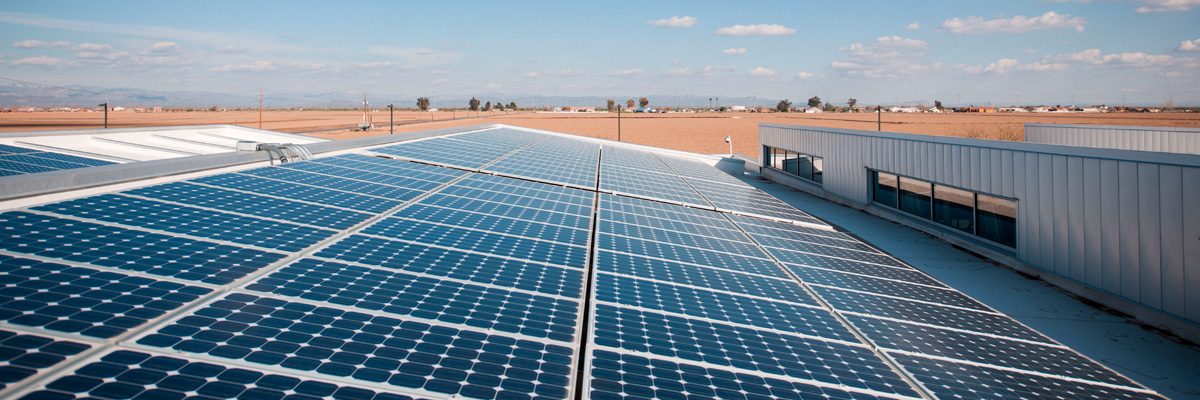
Discover solar around the Valley
We’re harnessing the power of the sun using photovoltaic units – solar modules that generate electric power – around the Valley. Learn more about utility-scale solar and battery storage.
See where these units are located and how much energy they produce.
Peoria, AZ
1 photovoltaic solar unit: 200 kW
St. Johns, AZ
1 photovoltaic solar unit: 21 kW
Tempe, AZ
1 photovoltaic solar unit: 75 kW
Phoenix, AZ
1 photovoltaic solar unit: 100 kW
Pinal County, AZ
1 photovoltaic solar unit: 146 kW
Tempe, AZ
1 photovoltaic solar unit: 75 kW
Mesa, AZ
3 photovoltaic solar units: 404 kW
Tempe, AZ
1 photovoltaic solar unit: 75 kW
Our plan to decommission coal
SRP is committed to reducing our carbon emissions, and we are starting to decommission certain coal-fired plants. The plan includes Hayden in 2027, Craig Unit 1 in 2025 and Unit 2 in 2028, Four Corners in 2031 and Coronado no later than 2032.
